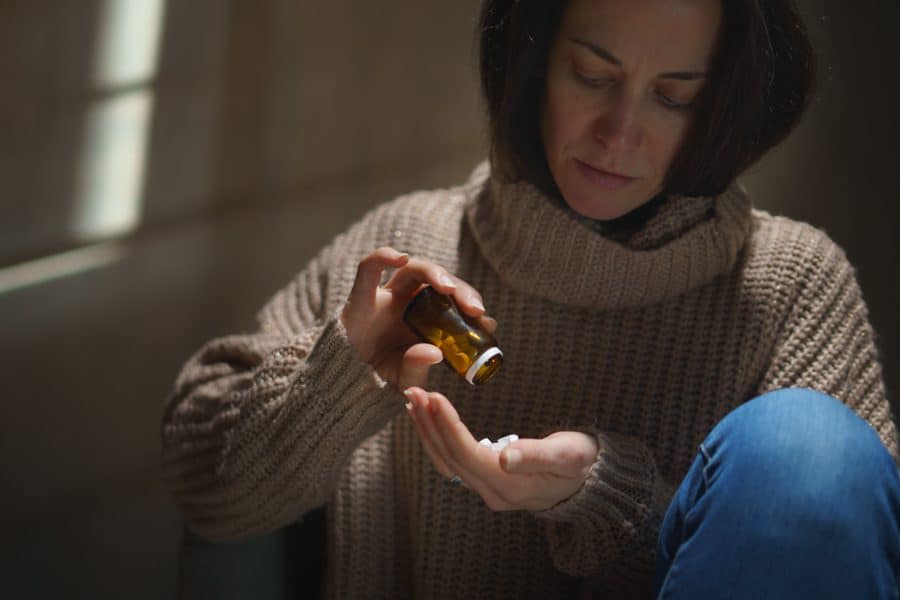Opioids are a class of drugs widely used for their pain-relieving properties, ranging from prescription medications to illicit substances. Their potency varies significantly, making it important to understand the risks associated with each type. Below, we will explore the most well-known opioids, ranked from strongest to weakest, along with their descriptions, recent statistics on opioid abuse, how they work, and available treatment options in Houston.
Ranking of Opioids
Here is a list of types of opioids and their potency.
Carfentanil is an extremely potent synthetic opioid, primarily used as a veterinary tranquilizer for large animals like elephants. It is estimated to be 10,000 times stronger than morphine and 100 times more potent than fentanyl.
Even minute amounts of carfentanil can be fatal to humans. Its recreational use poses extreme overdose risks.
Fentanyl is a synthetic opioid used medically for severe pain, often in cancer patients. It is about 50-100 times stronger than morphine. Illicitly manufactured fentanyl is a major contributor to the opioid crisis.
High potency makes overdose likely, especially when mixed with other drugs.
Heroin is an illegal opioid derived from morphine. It is commonly abused for its euphoric effects. Heroin is highly addictive, with a significant risk of overdose and long-term health complications.
Hydromorphone is a prescription opioid, approximately 5-10 times stronger than morphine, used for severe pain. High dependency potential and overdose risk if misused.
This prescription medication is used to treat moderate to severe pain. It is more potent than morphine but less potent than fentanyl. Misuse can lead to addiction and respiratory depression.
Oxycodone is a widely prescribed opioid for managing moderate to severe pain. Often combined with acetaminophen or aspirin, it has high abuse potential. Oxycodone is known for its role in the opioid epidemic, misuse can result in addiction and overdose.
Morphine is one of the oldest and most well-known opioids, often used in hospital settings for acute and chronic pain. While less potent than fentanyl or heroin, morphine still carries significant risks of dependency and overdose.
Hydrocodone is commonly prescribed for moderate pain relief, frequently combined with acetaminophen. Long-term use of hydrocodone can lead to addiction, even at prescribed doses.
Codeine is a milder opioid often found in combination with other medications to treat pain and cough. While less potent than other opioids, codeine misuse can still lead to addiction and overdose.
Tramadol is a synthetic opioid prescribed for moderate to moderately severe pain. It is considered less potent than other opioids. Dependency to tramadol is less likely but still possible, especially with prolonged use.
How Do Opioids Work in the Body?

Opioids work by binding to specific receptors in the brain, spinal cord, and other parts of the body. These receptors, known as opioid receptors, are part of the body’s pain-control system. When activated, they reduce the perception of pain and produce feelings of euphoria.
However, opioids also depress the respiratory system, leading to slowed breathing. In high doses, this can result in fatal respiratory failure. The body quickly develops a tolerance to opioids, requiring higher doses to achieve the same effect, which increases the risk of addiction and overdose.
Treatment Options for Opioid Addiction
Opioid addiction treatment involves a comprehensive approach tailored to the individual’s needs. Below is an overview of key treatment programs that help individuals overcome opioid abuse:
Medication-Assisted Treatment (MAT)
MAT is considered the gold standard for opioid addiction treatment, significantly reducing relapse rates. Medications used in MAT help manage withdrawal symptoms and cravings.
These medicines include:
- Methadone
- Buprenorphine
- Naltrexone
Behavioral Therapies

Behavioral therapies focus on addressing the psychological and emotional aspects of opioid addiction. They are crucial for understanding the underlying causes of substance abuse and equipping individuals with healthier coping mechanisms.
- Cognitive Behavioral Therapy (CBT): CBT helps individuals identify and change negative thought patterns that contribute to addictive behaviors. It teaches practical strategies for managing triggers and avoiding relapse.
- Dialectical Behavior Therapy (DBT): DBT is particularly effective for individuals who struggle with emotional regulation. It emphasizes mindfulness, stress tolerance, and interpersonal effectiveness to reduce self-destructive behaviors.
- Motivational Interviewing (MI): MI encourages individuals to explore their motivations for change and resolve ambivalence about quitting opioids.
- Contingency Management (CM): CM uses incentives, such as vouchers or rewards, to reinforce positive behaviors like abstinence from drug use.
Inpatient and Outpatient Rehabilitation
Rehabilitation programs offer structured environments for individuals seeking recovery, with options tailored to the severity of addiction and personal circumstances.
- Inpatient Rehabilitation: Also known as residential treatment, inpatient rehab involves living at a treatment facility for a designated period, typically 30–90 days. Inpatient treatment includes 24/7 medical and psychological support, individual and group therapy sessions, and holistic activities like yoga or meditation. This type of program is best suited for individuals with severe addiction or co-occurring mental health disorders who need intensive care and a drug-free environment.
- Outpatient Rehabilitation: Outpatient programs allow individuals to live at home while attending scheduled treatment sessions. Benefits of outpatient treatment include; flexible schedules, access to therapy and counseling, and medication management. This type of program is best for individuals with milder addiction or those transitioning from inpatient care who need ongoing support while maintaining work or family responsibilities.
Support Groups
Support groups provide peer-based recovery assistance, fostering a sense of community and accountability. These groups are invaluable for maintaining long-term sobriety.
- Narcotics Anonymous (NA):
A 12-step program designed specifically for individuals recovering from drug addiction. Members share experiences, offer support, and follow a structured path to recovery. - SMART Recovery:
A science-based alternative to 12-step programs, SMART Recovery focuses on self-management, cognitive strategies, and behavioral tools to maintain abstinence. - Peer-Led Recovery Groups:
These groups are often less formal and provide a safe space to share experiences and challenges with others facing similar struggles. - Family Support Groups:
Programs like Al-Anon or Nar-Anon offer support to the families of individuals battling opioid addiction, helping them understand addiction and maintain healthy relationships.
Opioid Detox
Detoxification, or medical detox, is the initial step in overcoming opioid addiction, focusing on safely managing withdrawal symptoms as the body eliminates the drug. It is conducted in a clinical setting under the supervision of healthcare professionals. The use of medications like buprenorphine or methadone alleviates withdrawal symptoms and reduces cravings. Throughout the process, individuals are monitored to ensure safety and comfort. Individuals with severe dependence on opioids or a history of difficult withdrawal experiences need detox to heal from addiction.
The Lovett Center Can Assist with Opioid Abuse in Houston, TX

The Lovett Center offers a compassionate, evidence-based approach to treating opioid addiction. With a team of experienced professionals, The Lovett Center provides tailored treatment plans, including therapy, medication management, and support groups. Their focus on holistic care ensures that clients address the root causes of addiction while building a strong foundation for recovery.
If you or someone you love is struggling with opioid addiction, The Lovett Center is here to help. Recovery is possible! Take the first step and contact us today!





